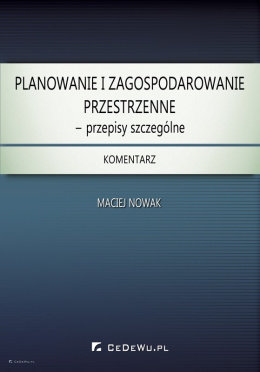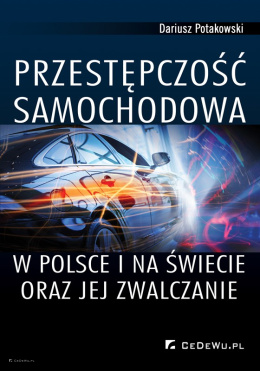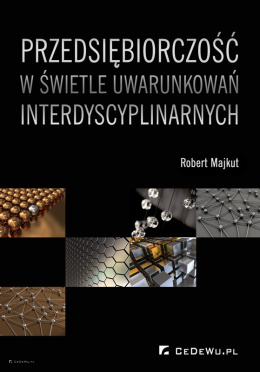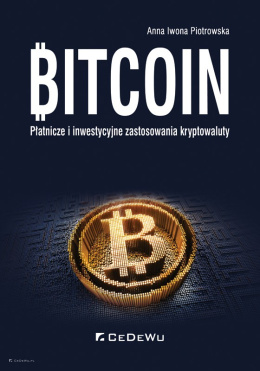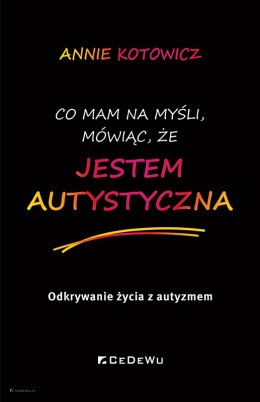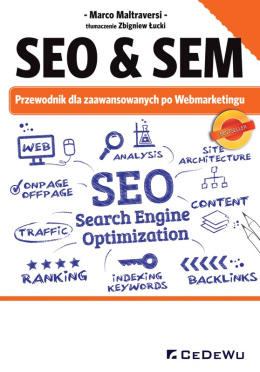-
Koszyk jest pusty
-
x

-
Koszyk jest pusty
-
x
- Kategorie
-
Practical management of decision problems in regional organization. Case study: Final product management
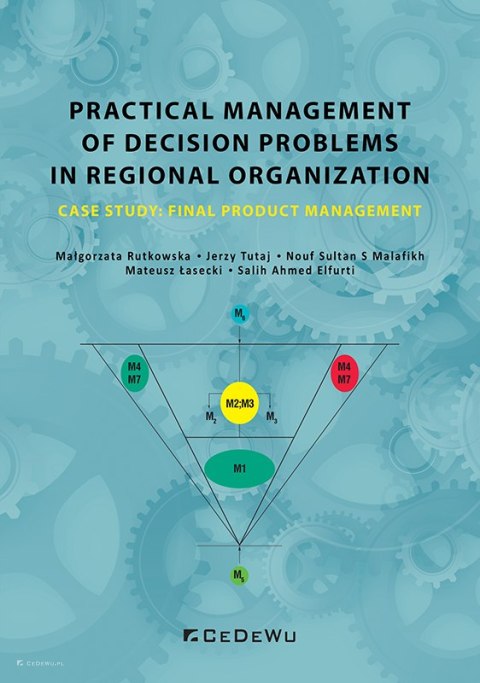
Part I of this book focuses on the management of the level of development of Final Products generated in the regions, while Part II covers the measurement, evaluation, and management of the level of development of Final Products. The content of the book is, on the one hand, closely related to the field of Management and Economics. On the other hand, it deals with the application of modern statistics procedures in all situations involving analyses and summaries of data related to the level of development of Final Products to facilitate the decision-making procedure under conditions of uncertainty and help scientists make decisions on measurement, evaluation, and management of the level of development of Final Products in all fields of science, thus increasing the efficiency based on the adopted goals in the real world. Therefore, it is worth emphasizing that the new procedure of assessing the Final Product development constitutes a continuation of various past scientific works which is applied while assessing deviations in the level of development of objects in various fields of science, e.g., a patient's health in medicine or the level of pollution in the natural environment. 1. To take the action of the decision 2. The whole process happens based on the goals 3. This procedure was applied in assessing the level of health and also the cleanness of the environment
| Wysyłka w ciągu | 24 godziny |
| Kod kreskowy | |
| ISBN | 978-83-8102-570-6 |
| EAN | 9788381025706 |
Therefore, it is worth emphasizing that the new procedure of assessing the Final Product development constitutes a continuation of various past scientific works which is applied while assessing deviations in the level of development of objects in various fields of science, e.g., a patient's health in medicine or the level of pollution in the natural environment.
1. To take the action of the decision
2. The whole process happens based on the goals
3. This procedure was applied in assessing the level of health and also the cleanness of the environment
Preface 9
Part I
Management the level of development of the Final Products in the Regions
Chapter 1
Region management 15
1.1. Local government reform with the end of communism 15
1.2. Definition of the local self-government 16
1.3. Satisfying the needs of residents in the regions 18
1.4. Tasks assigned to the voivodeship self-government 19
1.5. The local community as a subject of self-government 21
1.6. The concept of New Public Management (NPM 24
1.7. Another model of improving management in the public sphere 25
1.8. The basic knowledge to support management in the regions 28
1.9. The experiences of developed European regions 29
1.10. Regional benchmarking 30
1.11. The present structures of many countries 33
1.12. Management of the region 34
Chapter 2
Management of change in the local government unit 43
2.1. Case study City Hall office in Dzierżoniów 43
2.2. Introducing changes in modern organization 50
2.3. The management staff of the office 53
2.4. Implementation of organizational innovation 54
2.5. Summary - conclusions 59
Chapter 3
Evaluation of promotional activities in the local self-government unit 61
3.1. Local governments, as public institutions - Management with 4P 61
3.2. The services provided by the commune 63
3.3. The beginning of territorial marketing in Poland 64
3.4. Promotional campaign 66
3.5. The freedom in the execution of activities by local governments 68
3.6. Self-promotion as a form of direct contact 70
3.7. Public relation 72
3.8. Internet marketing 73
3.9. Questionnaire Survey 74
Bibliography for chapters 1, 2, 3 78
Part II
Measurement and assessment the levels of development of the Final Products
Chapter 4
Management the development level of health in conditions of uncertainty 83
4.1. Managerial of medical treatment 83
4.1.1. Statement the meaning of development level of health in connection with "failure" 83
4.1.2. Measurement, evaluation and management of the level of development 85
4.1.3. Medical treatment mix with patient's state of health - DMT - "M1" 86
4.1.4. Construction of the S Model as a basic mathematical model within the medical treatment mix 88
4.2. Level of development 89
4.3. Adaptation of the Characteristics Values "CV" typical to FAM to detect the development 90
4.4. The earlier Characteristics Values range of 4M of Management the Manufacturing as extendable of FAM's 7M to manage the level of development 90
4.5. New changes in recent development with 4D and 4P 91
4.6. Areas of the Levels authorities and Responsibilities 92
4.7. Making a decision 94
4.8. Practical side of medical treatment management the development level of health in conditions of uncertainty 95
4.8.1. Aim of the work 96
4.8.2. Management in the somatic sphere treatment basing on Simultaneous Model S with management towards Protection against Failure - MPF 99
4.8.3. System TAHL - causal-and-effect level 100
Chapter 5
The problem of of production an advances developmental vegetable oil 103
5.1. Historical evolution of Fail Assessment Method - FAM 103
5.2. Assessing the development level and making a decision with FAM based on the S Model 105
5.3. Development level indicator 108
5.4. Adaptation of the Characteristics Values "CV" typical to FAM to detect the development level 109
5.5. The earlier Characteristics Values range of 4M - Management the Manufacturing as extendable of FAM's 7M to manage the Level of Development 109
5.6. Extension and modification the characteristics of FAM's 7M into 4M referring as current practical usage 111
5.7. Typical characteristics to distinguish the development level - DL with the Marketing Mix 111
5.8. Technical and economic level of the developing product 113
5.9. Characteristics Values "CV" - technical quality & economic state in reality 115
5.10. Indicators of practical confirmation of the development level 118
5.11. Characteristics Values in the „S Rule" as a basic mathematical Model 121
Bibliography for chapters 4 and 5 123
About the Authors 127
MAŁGORZATA RUTKOWSKA
Dr hab. Eng., prof. of the university - researcher, at present 2022 head of the Department of Organization and Management of the Wrocław University of Science and Technology. A graduate of the University of Economics in Wrocław, she also obtained a PhD in economics there and a postdoctoral degree in economic sciences at the University of Economics in Katowice. She cooperates with many foreign universities. In 2006-2007 she was the head of two postgraduate studies: Auditor of EU-financed Projects and Financial Management in EU-financed Projects. Author/co-author of over 200 publications. She completed many research internships abroad (e.g. University of Zurich, Coesfeld, Vienna, Thessaloniki, Aveiro).
JERZY TUTAJ
Dr, a graduate of the University of Gdańsk, PhD thesis defended at the University of Wrocław. Dean of the Faculty of Social Sciences of the College of Management and Entrepreneurship in Wałbrzych in 1996-2004 (co-founder of the University). President of the "Zamek Książ" Company in the years 2004-2011. Member of the Management Board of the Lower Silesian Voivodeship in the years 2011-2014. From 2014, assistant professor at the Faculty of Computer Science and Management at the Wrocław University of Technology. Author and co-author of the Development Strategy for the Lower Silesian Voivodeship 2020, Development Strategies and Reports on the condition of several municipalities, as well as development and marketing strategies for enterprises (e.g. for: Electrolux Poland, Ronal Group, Elektrotim S.A.). For 25 years he has been dealing with consulting, conducting marketing and social opinion research (e.g. for Toyota). Lecturer at the Viadrina University in Frankfurt, the Technical University of Dresden and the University of Southern Denmark.
NOUF SULTAN S MALAFIKH
MS, citizen of Kingdom of Saudi Arabia. In the academic year 2015/2016 obtained a master's degree in chemical sciences at the University of Khartoum. From 2019 until now, preparing an interdisciplinary doctoral dissertation in the field of food analytics in the area of broadly understood analytical chemistry as part with the MPF conception - Management towards Protection against Failures for the decision making in a vegetable oil production company in Saudi Arabia.
MATEUSZ ŁASECKI
Dr, since 2016 a lecturer at the Private Higher Vocational School in Wrocław in the field of Electro radiology, in the topics of: Magnetic Resonance, Computed Tomography and Breast Imaging Diagnostics. 2017 - defense of the doctoral dissertation "The usefulness of multi-slice computed tomography in the assessment of advancement and response to treatment of Hodgkin's moth in children and young adults" (supervisor: Prof. Urszula Zaleska-Dorobisz) from 2018 - Employee of the Medical University of Wrocław, Department of Radiology, Department of General and Pediatric Radiology as an assistant; I am currently conducting research on fractal structures in oncological imaging diagnost.
SALIH AHMED ELFURTI
Nationality LIBYAN Bachelor of Science in Accounting 2005-2009, Master of Science in finance and Accounting SGH Warsaw School of Economics 2017-2020 Preparing to apply for PHD in one of the Economics Universities in Poland. The research plan titled "The Impact of Foreign Direct Investment on Economic Growth".
Reviewers:
Prof. Marian Noga; Director of the Institute of Business Cooperation, Wyższa Szkoła Bankowa we Wrocławiu - WSB Banking University
Dr inż. Osama Mohammed Elmardi - Uniwersytet Doliny Nilu, Atbara, Sudan
Bibliography for chapters 1, 2, 3
[1] Brańka S., Optymalizacja wydatków na promocję miast i regionów, Marketing terytorialny: nowe obszary i narzędzia, Wydawnictwo edu-Libri, Kraków 2015.
[2] Wiebe G., Merchandising Commodities and Citizenship on Television, Public Opinion Quarterly, Oxford, Wydawnictwo Oxford University Press, 1951, nr 15.
[3] Kotler P., Zatlman G., Social Marketing: An Approach To Planned Social Change, Journal of Marketing, Durham, Wydawnictwo Sage Publications, 1971, nr 35.
[4] Fox K., Kotler P., The marketing of social causes: the first 10 years, Journal of Marketing, Durham, Wydawnictwo Sage Publications, 1980, nr 44.
[5] Kotler P., Lee N., Social Marketing: Influencing Behaviors for Good, Los Angeles, Wydawnictwo Sage Publications, 2008.
[6] Sekuła A., Marketing Terytorialny, Marketing. Ujęcie systemowe, Wydawnictwo Politechniki Gdańskiej, Gdańsk 2005.
[7] Szromnik A., Orientacja marketingowa miasta (gminy) - próba uogólnienia i metoda pomiaru, Marketing: koncepcje, badania, zarządzanie, Polskie Wydawnictwo Ekonomiczne, Warszawa 2002.
[9] Gębarowski M., Nowoczesne formy promocji, Oficyna Wydawnicza Politechniki Rzeszowskiej, Rzeszów 2007.
[10] Florek M., Augustyn A., Strategia promocji jednostek samorządu terytorialnego - zasady i procedury, Warszawa, Wydawnictwo Fundacja Best Place-Europejski Instytut Marketingu Miejsc, 2011.
[11] Mazur K., Marketing usług edukacyjnych, Wydawnictwo Akademia Pedagogiki Specjalnej im. Marii Grzegorzewskiej, Warszawa 2001.
[12] Strużycki M., Nowacki R., Reklama w przedsiębiorstwie, Wydawnictwo Difin, Warszawa 2002.
[13] Dziekański P., Promocja jako element komunikacji JTS z otoczeniem, Acta Scientifica Academiae Ostroviensis, Ostrowiec Świętokrzyski, Wyższa Szkoła Biznesu i Przedsiębiorczości w Ostrowcu Świętokrzyskim, 2012.
[14] Łuczak A., Miasto i produkt miejski jako zagadnienia marketingowe, Samorząd Terytorialny Nr 11, 1996, s. 49.
[15] Florek M., Podstawy marketingu terytorialnego, Wydawnictwo Akademii Ekonomicznej, Poznań 2006.
[16] Kotler P., Armstrong G., Saunders J., Wong V., Marketing. Podręcznik europejski, Polskie Wydawnictwo Ekonomiczne, Warszawa 2002.
[17] Brańka S., Optymalizacja wydatków na promocję miast i regionów, Marketing terytorialny Nowe obszary i narzędzia, Wydawnictwo edu-Libri, Kraków 2015.
[18] Barczak B., Marketing w zarządzaniu gminą, Samorząd Terytorialny, Wydawnictwo Wolters Kluwer Polska, Warszawa 1999, nr 11.
[19] Brańka S., Zróżnicowanie aktywności promocyjnej dużych miast Polski i jego uwarunkowania, Wydawnictwo edu-Libri, Kraków 2016.
[20] Sekuła A., Marketing Terytorialny. Marketing. Ujęcie systemowe, pod red. M. Daszkowskiej, Wydawnictwo Politechniki Gdańskiej, Gdańsk 2005, s. 216-237.
[21] Kotler P., Marketing. Analiza, planowanie, wdrażanie i kontrola, Wydawnictwo FELBERG SJA, Warszawa 1999.
[22] Krzyżak M., Badania kwestionariuszowe adresatów działań promocyjnych gminy na przykładzie gminy Milówka, Samorząd Terytorialny, Wydawnictwo Wolters Kluwer Polska, Warszawa 2006, nr 9.
[23] Altkorn J., Podstawy Marketingu, Wydawnictwo Instytut Marketingu, Kraków 2004.
[24] Raport We Are Social, Hootsuite, Digital, 2019.
[25] Garwol K., Rola mediów społecznościowych w edukacji - stan obecny i perspektywy rozwoju, Dydaktyka Informatyki, Rzeszów 2017, Wydawnictwo Uniwersytet Rzeszowski, nr 12.
[26] https://networkeddigital.wordpress.com/2010/05/10/podzial-i-klasyfikacja-social-media/ (dostęp dnia 10.05.2021).
[27] Kaplan A., Haenlein M., Users of the world, unite! The challenges and opportunities of Social Media Business Horizons, Bloomington, Wydawnictwo Kelley School of Business, Indiana University, 2010, nr 53.
[28] Polańska K., Biznesowy charakter mediów społecznościowych, Zeszyty Naukowe Uniwersytetu Szczecińskiego, Szczecin 2011, Wydawnictwo Szkoła Główna Handlowa, nr 656.
[29] http://networkeddigital.com/2010/05/10/podzial-i-klasyfikacja-social-media/ (dostęp dnia 10.05.2021).
[30] Mazurek-Łopacińska K., Badania marketingowe - Metody, techniki i obszary aplikacji na współczesnym rynku, Wydawnictwo Naukowe PWN, Warszawa 2016.
[31] Kozielski R., Wskażniki marketingowe, Wydawnictwo Wolters Kluwer Polska, Warszawa 2016.
[32] Lovett J., Social Media Metrics Secrets, Wydawnictwo Wiley Publishing, 2011.
[33] Manczak I., Media społecznościowe w działalności marketingowej miast i regionów, Samorząd terytorialny, Warszawa, Wydawnictwo Wolters Kluwer Polska, 2015, nr 7-8.
[34. Informacje o powiatach, Urząd statystyczny w Zielonej Górze, Zielona Góra 2007.
[35] Granberg L., The role of instagram in choosing a travel destination, Bachelor Programme in International Business Administration, Lulea, Luleå University of Technology, 2019.
[36] Struktura Urzędu Marszałkowskiego w Zielonej Górze.
[37] Gierszewska G., Romanowska M., Analiza strategiczna przedsiębiorstwa, Warszawa, Wydawnictwo PWE, 2002.
[38] Strategia Rozwoju Województwa Lubuskiego 2030.
[39] Strategia Marki Lubuskie 2010.
[40] https://www.facebook.com/lubuskiepl [dostęp dnia 13.05.2021].
[41] https://www.instagram.com/lubuskie.pl/ [dostęp dnia 13.05.2021].
[42] https://twitter.com/lubuskiepl [dostęp dnia 13.05.2021].
[43] https://www.youtube.com/user/eLubuskie24 [dostęp dnia 13.05.2021].
[44] Mruk H., Marketing. Satysfakcja klienta i rozwój przedsiębiorstwa, Warszawa, Wydawnictwo Naukowe PWN, 2012.
Bibliography for chapters 4 and 5
[1] Abdulgadier H., Wybrane zagadnienia zarządzania remontami w specyficznych warunkach eksploatacji uprzedzeń, Rozprawa doktorska, Akademia Ekonomiczna, Wrocław 1995.
[2] Abdelmagid A., Wybrane cytokiny prozapalne IŁ-6, IL-8, TNF-a i białka ostrej fazy CRP u chorych z ostrym zapaleniem trzustki. Rozprawa doktorska. Akademia Medyczna, Wrocław 2004.
[3] Adamiecki K., O nauce organizacji. Wybór pism, pod red. Z. Heidricka, PWN, Warszawa 1970.
[4] Aduyeb A., Housing development in Libia, Rozprawa doktorska. Akademia Ekonomiczna, Wrocław 1999.
[5] Alagili A., Dysfunctional Uterine Bleeding, Rozprawa doktorska, Akademia medyczna, Warszawa 2004.
[6] Agaili Al., Omar M.K., Małachowski Z., Wykorzystanie metody FAM do wspomagania diagnozy lekarskiej, Acta Bio-Optica et Informatica Medica, Wrocław 2004.
[7] Albir T., Information system for bank managers performing management on the basis of exception anałysis, Politechnika Wrocławska, 1985.
[8] Al-Saedi B., Omar M.K., Application of FAM for evaluation the state of health, Inżynieria Biomedyczna, Wrocław, marzec 2007.
[9] Ayyoub S., Metoda oceny poziomu wydolności pracowników w specyficznym środowisku pracy. Rozprawa doktorska, Politechnika Łódzka, 2001.
[10] Bak D., Rozwój i rola logistyki w Wielkiej Brytanii. Sympozjum międzynarodowe „Praktyczne aspekty logistyki", (Logistic 91), Poznań 1991.
[11] Bałtowski M., System produkcji „akurat na czas", „Gospodarka Planowa" 1988, nr 6.
[12] Bellinger B., Quantifizierung, Bewertung und Bastgestaltung betrieblicher Rachtsueziehungen, Berliner Wissenschaftliche Gesellschaft 1978.
[13] Borkowski S., Mierzenie poziomu jakości, Wydawnictwo Humanista, Sosnowiec 2005.
[14] BP Statistical Review of World Energy, June 2005.
[15] Cader J., Ocena stopnia zaawansowania nieżytu błony śluzowej, Rozprawa doktorska, Akademia Medyczna, Wrocław 1978. Ekonomiczna, Wrocław 1999.
[16] El-Zoghbi N., System wspomagania zarządzania jakością środowiska wodnego. Rozprawa doktorska. Akademia Ekonomiczna, Wrocław 1999.
[17] Emerson H., Dwanaście zasad wydajności pracy, tłum. pod red. K. Adamskiego, Komitet Wykonawczy Zrzeszeń Naukowych Organizacji Pracy w Polsce, Warszawa 1925.
[18] Fayol H., Administracja przemysłowa i ogólna, TNOiK, Poznań 1947.
[19] Ferster R., Metoda oceny jakości produkcji poprzez komputerową analizę danych o przebiegu procesu technologicznego, Politechnika Wrocławska, Rozprawa doktorska, 1998.
[20] Ghanim Abusaeida, Evaluation and monitoring the quality level of life for patients with HIV/ AIDS in Libya, PHD Medical University in Wroclaw 2014.
[21] Goliszewski J., Controlling - system koordynacji przedsiębiorstwem, „Przegląd organizacji, 1999, nr 8-9.
[22] Hammer M., Reengineering the Corporation, Harper Business 1944.
[23] Hashem Saad Ali „The Proposed System of Supporting Economic Effects for Introducing New Edible Oils to the Libyan Market" The article was published by Torun International Studies - Acta Unversitatis Nicolai Copernici, 2018.
[24] Hashem Saad Ali, Fathelrahman A., Omar M., Radosinski E., "Management Towards Protection Against Failure - MPF" published by FAM Ownership, 2019
[25] Hashem Saad Ali Participation in the International Conference on Development of Organization in Turbulent Environment, April 19-21, 2018. The title of the presented paper was "The Concept of Management By Fail - MBF to be connected with the Network of Management's Function - NMF.
[26] Hashem Saad Ali, Hamza M., Szymon T., Łasecki M., „Zarządzanie Procesem Podejmowania Decyzji w oparciu o Model Symultaniczny - S" CEDEWU Warszawa 2021.
[27] Hellwig Z., Zastosowanie metody taksonomicznej do typologicznego podziału krajów ze względu na poziom ich rozwoju oraz zasoby i strukturę wykwalifikowanych kadr, Przegląd Statystyczny, 19668, t. XV.
[28] Horodnicki J., Dobór leku dla parametrów biomechanicznych typowych dla schizofrenii za pomocą algorytmu Steinhausa, Rozprawa habilitacyjna. Akademia Medyczna, Szczecin, 1975.
[29] Karmowski A., Ocena wczesnej efektywności raka szyjki macicy według algorytmu Steunhausa, Rozprawa habilitacyjna. Akademia Medyczna, Katowice 1989.
[30] Key World Energy Statistics, IEA 2005.
[31] Khlafalla M, Theoretical problems of introducing a standardization system of shipbuilding in Sudan and practical application of computerized Network-Tecnique for that system, Politechnika Wroclawska 1982.
[32] Khlafalla Omar M., Pilawski B., Multicriteria analysis for evaluation of the population in Medicine and enginee4ring based on Steinhaus and Bellinger's algorithms, Tart Anu Dhabi - Wrocław 1994.
[33] Kjell R., Perceptions of future, of ten flawed, shape plans and Policies, Oil and Gas J., 1998.
[34] Kołodko G., Wędrujący świat, Prószyński i S-ka, Warszawa 2008.
[35] Konarzewska-Gubałała E., Zarządzanie przez jakość, Wyd. AE, Wrocław 2003.
[36] Kublik A., Będziemy zabiegać o libijskie złoża, Gazeta Wyborcza, 30 XII 2004, Warszawa.
[37] Leszczyńska A., Ilościowa ocena poziomu organizacji przedsiębiorstwa, Ekonomika i Organizacja Pracy Nr 1/1971, Warszawa.
[38] Leszczyńska A., Ocena poziomu organizacji przedsiębiorstwa, Instytut Pracy Nr 12/1973, Warszawa
[39] Lewandowski M., Fuzje i przejęcia jako metody wzrostu przedsiębiorstw, Akademia Ekonomiczna, Poznań 1998.
[40] Libal V., Organizacja i zarządzanie produkcją, PWN, Warszawa 1976.
[41] Lichtarski J., Kryteria i metody oceny efektywności przedsięwzięć organizatorskich w przedsiębiorstwie, seria monogr., oprac. Nr 6, Akademia Ekonomiczna, Wrocław 1982.
[42] Łasecki M., Diagnostyka obrazowa, ze szczególnym uwzględnieniem wielorzędowej tomografii komputerowej w ocenie zaawansowania i odpowiedzi na leczenie chłoniaka Hodgkin'a u dzieci i młodych dorosłych, Rozprawa Doktorska, Uniwersytet Medyczny Wrocław 2016.
[43] Milewska G., Gdzie zatrzyma się cena za baryłkę? Ropa nadal rządzi światem, Nafta & Gaz Bizness, jesień 2005.
[44] Molendowski F., Zastosowanie metody Bellingera do wyboru technologii, Rozprawa doktorska. Politechnika Wrocławska.
[45] Noga M., Państwo a inwestycje w gospodarce rynkowej, Dolnośląska Oficyna Wydawnicza, Wrocław 1994.
[46] Noga M., Makroekonomia Państwo a inwestycje w gospodarce rynkowe „Taksonomiczna miara dobrobytu społecznego - TMDE" Dolnośląska Oficyna Wydawnicza , Wrocław 1994.
[47] Noga M., Konkurencja i dominacja a działalność państwa w demokratycznej gospodarce rynkowej, Uniwersytet Ekonomiczny, Wrocław 2007.
[48] Noreng O., Tauris I.B., Crude Power-Politics and the Oil Market, 2006.
[49] Nowak M., Controlling w zarządzaniu uwarunkowania psychologiczne, Wydawnictwo
Uniwersytetu Ekonomicznego we Wrocławiu-Wrocław 2013.
[50] Oakland J.S., Total Quality Management, Oxford: Butterworth-Heinemann Ltd, 1992.
[51] Omar M. K., Synergetic effect calculation, Al-Fateh University, Tripolis 1996.
[52] Omar M.K., Fail Assessment Method, Politechnika Wrocławska, Wrocław 2004.
[53] Petzet A., Decline in world crude reserves is first since'92, Oil &Gas J., 1999.
[54] Pilawski B. Komputer narzędziem pracy organizatora, PWE Warszaw 1984.
[55] Pilawski B. Obliczanie efektów ekonomicznych postępu technicznego w przedsiębiorstwie, PWE Warszawa 1990.
[56] Pilawski B., Omar M., Management By Exception, University of Al.-Fateh, Tripolis 1992.
[57] Poznańska K., Lean management „Ekonomika i Organizacja Przedsiębiorstwa", 1994, nr 1.
[58] Prognoza IEA, Oil Market Raport, 13 XII 2005.
[59] Radosiński E., Systemy informatyczne w dynamicznej analizie decysyjnej, Wydawnictwo Naukowe PWN, Warszaw 2013
[60] Radosiński E., Sztuczna inteligencja w analizie przedsiębiorstwa - analityczne systemy ekspertowe (Artificial intelligence in the analysis of a business - analitical export systems), Polskie Towarzystwo Symulacyjne, Wrocław 1993.
[61] Saad A., System wspomagania zarządzania jakością w przemyśle paszowym. Rozprawa doktorska, Akademia Ekonomiczna, 2005.
[62] Secretariat of Planning, Bureau of National Accounts, Tripolis 2001.
[63] Słoniec P., Analiza efektywności procesu produkcyjnego przy wykorzystaniu algorytmu Steinhausa dla niektórych z góry liczb i zestawu cech. Rozprawa doktorska, Ormasz, Warszawa 1998.
[64] Sobolak Z., Uwagi o niektórych metodach obliczeniowych w badaniach naukowych ze szczególnym uwzględnieniem metody Steinhausa, Rozprawa habilitacyjna. Politechnika, Opole 1992.
[65] Stasiewicz W., Rusnak Z., Siedlecka U., Statystyka, Elementy teorii i zadania, Wydawnictwo Akademii Ekonomicznej we Wrocławiu, Wrocław 2006.
[66] Statistical Handbook of Liban, Libyan Arab Iamahiviya Secretariat of Planning, Tripolis (year 1980-2002).
[67] Steinhaus H., Sur La division des corps material en parties, Bulletin de La Akademie Polonaise des Science, CL III, Vol. IV 12/1956.
[68] Surygały J., Ropa naftowa a środowisko przyrodnicze, Oficyna Wydawnicza Politechniki Wrocławskiej, Wrocław 2001.
[69] Szołtysek K, Omar M.K., Dziuba S., Wykorzystanie metody FAM do badania i oceny mieszanek mąk w systemie FMC-FAM, Przegląd Zbożowo-Młynarski, Warszawa, grudzień 2006.
[70] Szostak K., Metoda szacowania efektów ekonomicznych projektów wynalazczych zmieniających jakość produkowanych wyrobów, Rozprawa doktorska. Politechnika Wrocławska, 1981.
[71] Dziuba S.T., Flour Mixture Choosing Rozprawa Doktorska Uinversity of Economic Wroclaw 2007.
[72] Dziuba S.T., Omar M.K., The use of Fail Assessment Method in the formation of quality parameters of wheat flour, Wydawnicza Stowarzyszenia Inżynierów Produkcji i Jakości Częstochowa 2015.
[73] Tatrzański M., OPEC a niezależni producenci ropy naftowej, Bezpieczeństwo narodowe nr 2/2006.
[74] Taylor F.W., The principle of scientific Management, Harpera. Brothers Publ., New York 1911.
[75] Taylor F.W., Zarządzanie warsztatem wytwórczym, Instytut Naukowej Organizacji i Kierownictwa, Poznań 1947.
[76] Weber M., Wirtschaft und Gesellschaft, Berlin 1992.
[77] Wrona A., Propozycja uproszczenia metody oceny wielokryterialnej w zakresie badania jakości produkowanych wyrobów, Politechnika Wrocławska, 1989.
[78] Zaleska M., Ocena akustyczna stanów patologicznych narządu głosu według Bellingera, Rozprawa habilitacyjna, Akademia Medyczna, Wrocław 1988.
[79] Żminda A., Metoda wdrażania elektronicznej techniki obliczeniowej do zarządzania przez etapową rozbudowę banku informacji, Rozprawa doktorska, Komunikat nr 247, Inst. Org. i Zarzadz., Politechnika Wrocławska, Wrocław 1977.
Polub nas na Facebooku
